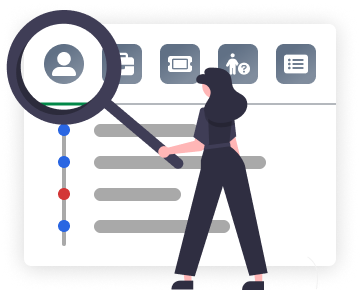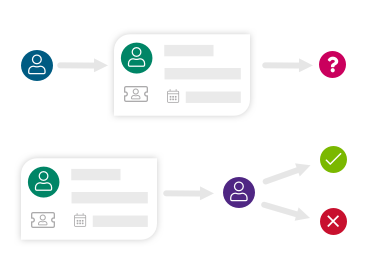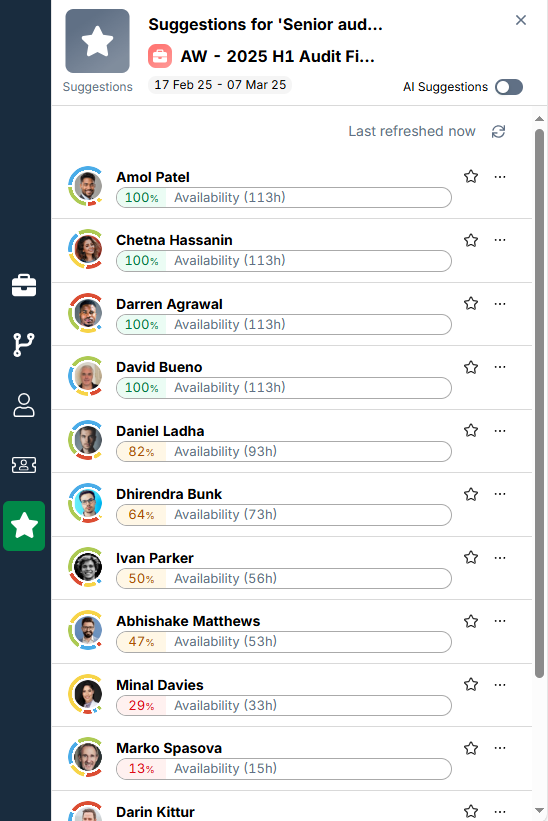At Retain, we think resource planning is pretty disconnected. Planners can be obsessed with who's available, but lack insight into what people can actually do. The result? Projects staffed with mismatched talents, hidden skills going unused, and both clients and employees feeling frustrated.
Truly effective resource planning must be built on a foundation of skills; understanding not just who's free, but who's capable, experienced, and best suited to each specific piece of work.
In this article, we'll look at why skills-based resourcing matters, what makes an effective skills framework, and how connecting skills data to scheduling can transform your business.
🖱️New to Retain? Retain transforms resource planning with skills intelligence and AI-powered capabilities, giving you one unified platform for all your resource management needs. Book a demo today to see how it works.
The limitations of traditional resource planning

Most resource planning systems today focus almost exclusively on who's free and when. But when you rely too much on availability-based scheduling, at some point you’ll likely run into problems:
❌ Resource managers end up making decisions based on incomplete information. They know who's free but not who's truly qualified. This leads to suboptimal project staffing and inconsistent delivery quality.
❌ The same top performers get overbooked repeatedly. Without visibility into the full skill set of your workforce, resource managers default to the people they know can deliver. These "go-to" professionals become overwhelmed while others sit underutilised.
❌ Skills data becomes fragmented across the organisation. HR might maintain one set of skills records, while project managers track different capabilities in their own systems. This fragmentation makes it impossible to get a holistic view of your talent.
❌ Departmental silos prevent optimal resource use. Audit might be desperately searching for someone with data analytics expertise, unaware that the perfect person sits in Advisory with capacity to spare.
This reactive approach creates real business pain. Projects take longer and cost more because teams lack the right capabilities. Clients notice the quality variations and question your consistency. Talented staff feel mismatched to their assignments and look elsewhere for more suitable work.
Perhaps most concerning is how traditional resource planning undermines strategic workforce development. When you can't clearly see skill gaps across your organisation, how do you make informed decisions about hiring, training, and career development?
The bottom line: Simply knowing who's free is no longer enough.
Why skills should be the foundation of resource planning

Moving to a skills-first approach transforms how organisations deploy talent. Rather than focusing on availability, you begin with the specific capabilities needed for success.
This approach has huge benefits across every area of your business:
#1. Project delivery becomes more reliable and consistent
When teams have the precise skills needed for each engagement, they complete work faster and with fewer issues. Research suggests that properly skilled teams can significantly reduce project overruns and delivery issues.
#2. Utilisation rates improve naturally
By matching the right people to the right work, you reduce the time spent struggling with mismatched assignments. Many firms report utilisation increases of 5-10% after implementing more precise skills matching.
#3. Client satisfaction rises significantly
Clients immediately notice the difference when they work with properly skilled teams. They receive more value, build stronger relationships, and become more likely to recommend your services to others.
#4. Employee satisfaction and retention improve dramatically
People want to use their strengths and develop their capabilities. Skills-based planning ensures they work on projects that match their expertise and career aspirations. This alignment often leads to measurable improvements in staff retention.
#5. Cross-department collaboration increases organically
When you break down skill silos, people naturally work across traditional boundaries. This collaboration brings fresh perspectives and innovative solutions to client challenges.
#6. The business becomes more adaptable to market changes
With clear visibility into your organisation's skills inventory, you can quickly pivot to meet new demands or explore emerging opportunities. You'll know instantly whether you have the capabilities to tackle a new type of project or need to develop them.
Skills-based planning also creates a virtuous cycle of development. When your system tracks both the skills required for projects and the skills demonstrated by your people, you naturally build a learning organisation. Each project becomes an opportunity to develop capabilities that align with strategic needs. You'll spot emerging skill gaps before they become critical. You'll identify opportunities to build competitive advantages through targeted skill development. And you'll make better hiring decisions based on actual capability needs rather than just headcount.
What makes a successful skills taxonomy?
At the heart of skills-based resource planning is a skills taxonomy. In essence, this is a structured framework that defines, organises, and standardises skills across your organisation.
A practical skills taxonomy needs several key elements:
#1. Standardisation across departments
Different teams often use different terminology for the same skills. What the tax department calls "corporate restructuring experience," the advisory team might label "M&A transaction support." A successful taxonomy creates a common language that works across departmental boundaries.
This standardisation enables resource managers to quickly search for capabilities regardless of where people sit in the organisation. It also helps leadership understand skill distribution and gaps at an enterprise level.
#2. The right level of granularity
Too broad, and your taxonomy becomes meaningless. For instance, "project management" could mean anything from running a small internal initiative to managing a complex multi-year transformation. Too detailed, and it becomes unwieldy and difficult to maintain.
The most effective taxonomies balance specificity with usability. They capture meaningful distinctions (like different types of auditing experience or technical certifications) while remaining intuitive for both resources and managers.
#3. Skill levels and proficiency measures
Simply knowing someone has a skill isn't enough. You need to understand their level of proficiency. Is this person a novice who needs supervision, or an expert who can lead others?
Modern taxonomies incorporate skill levels based on demonstrated experience, verified project work, and formal qualifications. This granularity allows for precise matching of capability to project requirements.
#4. Dynamic linking to actual project work
Skills aren't static; instead, they develop through project experience and can fade without recent practice. A living taxonomy tracks what skills people have and how recently they've used them, and in what context.
When skills are automatically updated based on project assignments, you create a self-improving system that becomes more accurate over time. Resource managers can see who has which skills and who has used them successfully on similar projects.
#5. Integration with resource planning workflows
The most sophisticated skills frameworks are directly integrated with scheduling and planning tools. This allows resource managers to search for combinations of skills, availability, location, and other factors in a single interface.
Rather than toggling between systems or manually cross-referencing data, planners can quickly identify the ideal resources for each project requirement.
#6. AI and machine learning capabilities
Advanced taxonomies use intelligent algorithms to enhance skills management. These systems can suggest skill relationships, identify patterns in successful project staffing, and even predict which resources would work well together based on complementary capabilities.
As the system learns from actual project outcomes, it becomes increasingly valuable for resource planning—moving from simply recording skills to actively recommending optimal resource combinations.
🖱️ Building an effective skills framework becomes significantly easier with purpose-built technology that automates taxonomy creation and connects it seamlessly to your resource planning. The right solution can make this insight really easy to access.
Bridging skills data with resource planning

Having a well-defined skills taxonomy is only half the challenge. The real magic happens when you connect this rich skills data to your day-to-day resource planning processes.
Many organisations struggle here. Skills information often lives in HR systems, completely disconnected from project scheduling tools. Resource managers then revert to availability-based scheduling simply because it's more accessible, even when they know a skills-first approach would yield better results.
That’s why the best solutions make sure skills information lives within your resource planning environment. This creates a single interface where resource managers can view skills, availability, and project requirements together.
You can also use AI to intelligently match requirements to resources based on skill recency, proficiency levels, and complementary capabilities. The best solutions present this information visually through intuitive dashboards that highlight skill distribution, capability gaps, and future needs. A bit like in this example below:

For maximum impact, skills data should be embedded in natural resource planning workflows, automatically surfacing at key decision points from opportunity assessment to final staffing decisions. As projects complete, performance insights should update individual skill profiles, creating a continuous feedback loop that makes your skills inventory increasingly accurate.
The best bit: Organisations that successfully bridge skills data with resource planning often see resource managers spending 30-40% less time searching for team members, with projects starting faster because matching happens in minutes rather than days.
Transform your business with skills-first resource planning
The path forward is clear. Move beyond availability-based scheduling to truly understand what your people can do. Create a standardised skills framework that works across departments. Connect skills data directly to resource planning workflows. And use advanced technology to make intelligent matching possible at scale.
The benefits ripple throughout your organisation. Projects succeed because they have the right expertise from day one. Clients receive consistent, high-quality service regardless of which team members are assigned. Employees develop their capabilities through well-matched assignments. And leadership gains the insights needed for strategic workforce planning.
Are you ready to transform your approach to resource planning? Book a demo.


